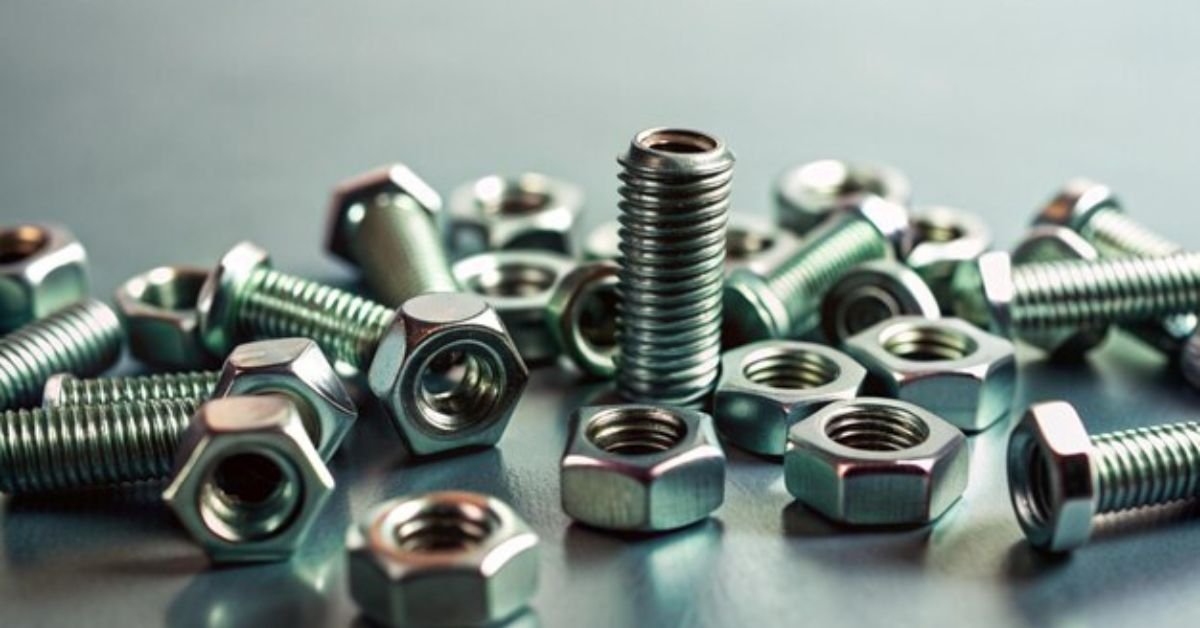The term “nut” is commonly understood to refer to a type of fastener, the name “Trent Howard” does not directly correlate with any known classification of a nut in engineering or mechanical contexts. However, there is always room for creative interpretation, and by applying it to the realm of mechanical fasteners, we can imagine a unique type of nut named after “Trent Howard,” drawing on the qualities, characteristics, and applications of various nuts that exist in the industry.
This article will explore what a “Trent Howard nut” could represent in the world of fasteners, its hypothetical characteristics, how it compares to other types of nuts, and its potential applications in different industries. The goal is to provide a deeper understanding of what a “Trent Howard nut” could be, emphasizing the importance of nuts in mechanical systems while ensuring the article is informative, engaging, and imaginative.
What Could the Trent Howard Nut Be?
If we were to assign specific characteristics to the Trent Howard nut, it could be imagined as a specialized fastener with unique qualities that set it apart from traditional nuts like hex nuts, wing nuts, or flange nuts. The Trent Howard nut might be a hybrid design that incorporates the best features of existing nuts while introducing new innovations.
One possibility is that the Trent Howard nut could be a self-locking nut, designed to prevent loosening due to vibration or torque. This type of nut would be ideal for applications where safety and stability are critical, such as in aerospace, automotive, or heavy machinery industries. Self-locking nuts typically use friction or tension to stay in place, ensuring that the assembly remains secure even under harsh conditions.
Alternatively, the Trent Howard nut might be envisioned as a corrosion-resistant nut, made from advanced materials like stainless steel, titanium, or specially coated alloys. This would make it ideal for outdoor and marine applications where exposure to moisture and harsh environments could lead to rust or degradation over time.
In a creative sense, the Trent Howard nut could also be a quick-release nut designed for ease of use, allowing for fast assembly and disassembly without the need for special tools. This feature would be highly valued in industries where frequent maintenance or adjustments are necessary, such as in manufacturing or construction.
Hypothetical Characteristics of the Trent Howard Nut
Imagining the Trent Howard nut allows us to explore its hypothetical features and how they could contribute to its functionality. Below are some of the potential characteristics that could define this unique nut:
- Self-Locking Mechanism: The Trent Howard nut could incorporate a self-locking feature that prevents it from loosening due to vibrations or mechanical stress. This feature is crucial in situations where safety and reliability are paramount, such as in the aviation industry or in heavy machinery operations.
- Durable Materials: Made from high-strength materials such as stainless steel or titanium, the Trent Howard nut would be highly resistant to wear, corrosion, and environmental degradation. This would make it a perfect choice for outdoor and marine applications where exposure to harsh elements is inevitable.
- Ergonomic Design: The Trent Howard nut could feature an ergonomic design that allows for easier hand tightening and loosening, reducing the need for excessive torque or tools. This would improve efficiency during assembly and maintenance.
- Quick-Release Capability: In situations where speed is essential, such as in emergency repairs or rapid assembly processes, the Trent Howard nut could include a quick-release mechanism. This feature would allow for fast removal without the need for wrenches or other tools, making it ideal for applications where time is a critical factor.
- Vibration Resistance: The Trent Howard nut could have an enhanced vibration resistance, making it suitable for use in environments where high levels of movement or oscillation are present, such as in automotive or industrial machinery.
These features would make the Trent Howard nut an innovative addition to the fastener market, offering a combination of strength, ease of use, and versatility that could meet the demands of various industries.
How the Trent Howard Nut Compares to Traditional Nuts
To better understand the Trent Howard nut’s potential role in mechanical systems, it’s important to compare it to some traditional types of nuts commonly used in industry:
- Hex Nut: The most common type of nut, the hex nut, features six sides and is typically used in conjunction with bolts for general fastening purposes. The Trent Howard nut could improve upon this design by incorporating a self-locking mechanism or corrosion-resistant materials, offering enhanced performance in critical applications.
- Wing Nut: Wing nuts are designed for hand tightening and are often used when frequent adjustments are required. While the wing nut offers convenience, the Trent Howard nut’s hypothetical ergonomic design and quick-release mechanism could provide a more sophisticated and user-friendly solution for quick adjustments.
- Flange Nut: Flange nuts have a wide flange at one end that acts as a built-in washer, distributing pressure over a larger area. The Trent Howard nut could take this concept further by incorporating vibration-dampening features or materials that enhance stability in dynamic environments.
- Lock Nut: Lock nuts are designed to prevent loosening over time, particularly in high-vibration environments. The self-locking feature of the Trent Howard nut could make it a strong competitor to lock nuts, providing an even more reliable solution for critical applications.
Each of these traditional nuts serves specific functions in various industries, but the Trent Howard nut could potentially offer a more versatile and advanced solution, capable of addressing multiple challenges in one innovative design.
Applications of the Trent Howard Nut
The Trent Howard nut, with its hypothetical features, could find applications across numerous industries. Its versatility and innovative characteristics would make it an attractive option for engineers and designers seeking enhanced performance and reliability.
- Automotive Industry: The Trent Howard nut could be used in car assemblies, particularly in areas that experience significant vibration and stress, such as engine mounts or suspension systems. The self-locking and vibration-resistant features would be especially beneficial in ensuring long-term stability and safety.
- Aerospace Industry: In the aerospace sector, where safety and precision are paramount, the Trent Howard nut could be invaluable. Its corrosion-resistant materials and self-locking mechanism would ensure that critical components remain secure, even under extreme conditions such as high altitudes, temperature fluctuations, and vibration.
- Marine Industry: Boats and other marine vessels are exposed to harsh environmental conditions, including saltwater and humidity. The corrosion-resistant properties of the Trent Howard nut would make it an excellent choice for use in these applications, ensuring longevity and reliability even in the most challenging environments.
- Construction Industry: In construction, fasteners need to withstand heavy loads, vibration, and exposure to the elements. The Trent Howard nut’s quick-release capability and durable materials would make it an ideal solution for scaffolding, machinery, and other temporary or semi-permanent structures.
- Renewable Energy: Wind turbines and solar panels are exposed to constant environmental stress, including wind, rain, and temperature changes. The Trent Howard nut’s vibration resistance and corrosion-resistant materials would make it a perfect fit for renewable energy infrastructure, ensuring that components remain secure and functional over time.
Importance of Advanced Fasteners
Fasteners may seem like small, simple components, but they are integral to the safety and stability of countless mechanical assemblies. The development of advanced fasteners like the Trent Howard nut can significantly impact the performance and longevity of critical systems, from cars to airplanes to industrial machinery.
By combining the best features of traditional nuts with new innovations, the Trent Howard nut represents the next step in fastener technology. Its potential to offer enhanced performance in terms of safety, durability, and ease of use could help engineers and designers create more reliable and efficient systems, ultimately improving the products we use every day.
Conclusion
While “Trent Howard” may not yet be a recognized type of nut in the fastener industry, imagining the possibilities allows us to explore how advanced nuts can improve performance across a wide range of applications. The hypothetical Trent Howard nut, with its self-locking mechanism, corrosion-resistant materials, and quick-release capability, represents an exciting potential development in fastener technology.
Fasteners are fundamental to the safety and reliability of mechanical systems, and innovations like the Trent Howard nut could play a crucial role in enhancing performance, ensuring safety, and extending the lifespan of critical components in industries ranging from automotive and aerospace to marine and construction. Whether real or imagined, the idea of the Trent Howard nut reminds us of the importance of continuous innovation in the world of engineering and design.











